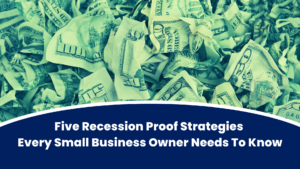These are tough times. We’re all experiencing whiplash with businesses being reopened in some parts of the country and then being shut down again with the looming spectre of COVID-19 gripping the United States. Our new normal is not normal at all. Navigating our new business environment takes courage, patience, and above all, flexibility. Given that, here at Founders First, we wanted to offer you some advice for reopening — and staying open — when the time is right.
I recently convened a panel of three experts to get some real-world, practical input on this. My guests were Ty Smith, Founder and CEO of Vigilance Risk Solutions; Elaine Swann, Founder of The Swann School of Protocol; and Rod Smartwood, President of HR Prime. You can listen to the entire panel discussion, including a Q&A, on our webinars page. But I also wanted to sum up some immediate thoughts from our conversation here.
Practice collaborative leadership
First off, the only way to successfully reopen is for leadership to lead with buy-in and input from your frontline workers. When you open the doors again, things are not going to be the same. You’ll have to set new protocols. As Swann said, “Coming back to work does not mean coming back to work the same way we were before.”
The first thing many employees will probably want to do after not seeing each other for so long is to hug, shake hands, or fist bump. But none of that will help contain the spread of COVID-19, so you’ll have to enact guidelines that we never imagined even six months ago. Leaders have to lead this, but we should do it with input from our teams. If employees don’t feel like they are part of the process, they are not likely to support the new rules that govern office behavior. They need to understand the “why” behind any action you’re asking them to take, said Smartwood. At the top level, we’re instituting best practices to protect others.
So, while CEOs must lead, don’t make decisions alone. Set up a direct line of communication with your employees specific to covid. That could be over a communication channel you already have established (emails, slack, chat, etc.), or you could create something new. Have regular check ins and demonstrate that you are listening.
Have a plan
Social distancing is going to be required. The clearer you can establish guidelines that everyone can follow, the better. The last thing you want are rules, restrictions, or requirements that can be interpreted and practiced differently. Keep everyone on the same page.
Start with the guidelines from the CDC. Be sure to understand the requirements from state, city, and county governments, and your landlord. But also discuss with your team. As long as you fulfill government-mandated requirements, you may have the need for stricter or looser guidelines depending on your business. Regardless, you will need to establish some form of physical barriers and social distancing. You’ll need things like hand sanitizer, temperature checks, visitor check-ins, and a daily sanitation plan. Smith also recommended doing a security risk assessment to make sure you’re aware of where your business might be vulnerable right now.
Adapt and be flexible
We are in a situation we’ve never experienced before. New information and guidelines come out continuously. So we all have to be able to adapt. Part of surviving in this new normal is being flexible. You have to be able to pivot when necessary, and show your team you are not locked-in to new restrictions with no end, no changes, and no employee input.
You might stagger work days, or have different employees come in at different times. You might keep the office closed on some days. You might find completely different ways of working. This is where the entrepreneurial leadership you bring to the table can really help as you develop new systems and ways to work that can best serve your customers and employees. And always be willing to iterate and improve based on new guidelines as well as the voice of your employees.
Do you need to reopen the office at all?
Take the long view. We now know that covid is going to affect businesses for years, not months. A careful reopening strategy could look like this:
- 1–2 months: Returning essential workers who are needed onsite to reopen business
- 3–6 months: Increased capacity with the return of workers who are more effective in the office
- 6–24 months: Full onsite capacity with potential permanent remote workforce
If you don’t have to reopen the office and people can work from home for the time being, consider doing so. Or if 50% of your workforce is doing just fine working remotely, do you need to bring them all back to the office? The more you can adapt and social distance, the better off your business will be in the long run.
Give your employees emotional support
Finally, let’s not forget we’re all human. We’re experiencing something that is unprecedented in our lifetimes. Sometimes employees are just going to need a break. And sometimes they may need extra mental and emotional support. The best thing you can do is offer empathy. Beyond that, consider employee assistance program (EAP) options. Or consider supplementing your health care resources with access to subject matter experts who can help you and your team navigate the stress of these times.
Regardless of where your business is at, my first wish for you and everyone you work with is to stay safe. And stay tuned. We’ll continue to put out information here at Founders First to help you navigate our new reality.
To listen to the entire webinar on best practices for reopening your business, visit our webinars page.
Kim Folsom is the founder and CEO of Founder’s First Capital Partners, LLC and the FoundersFirstCDC nonprofit.




